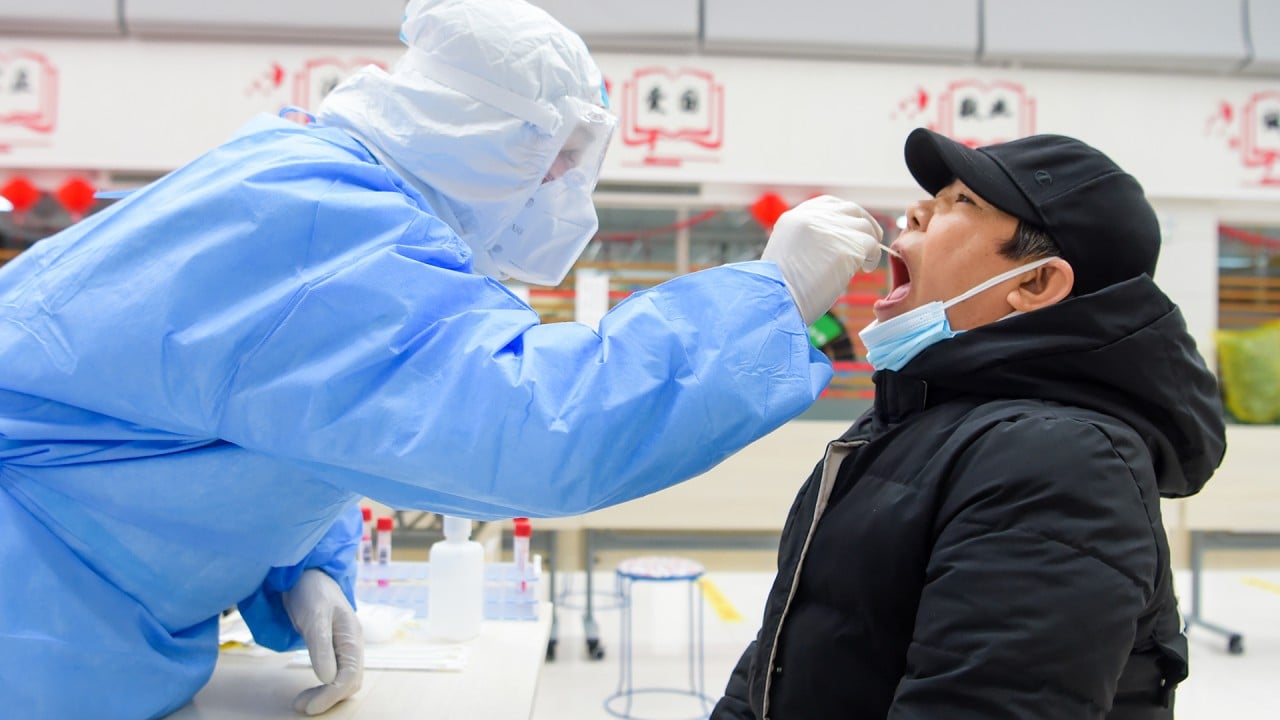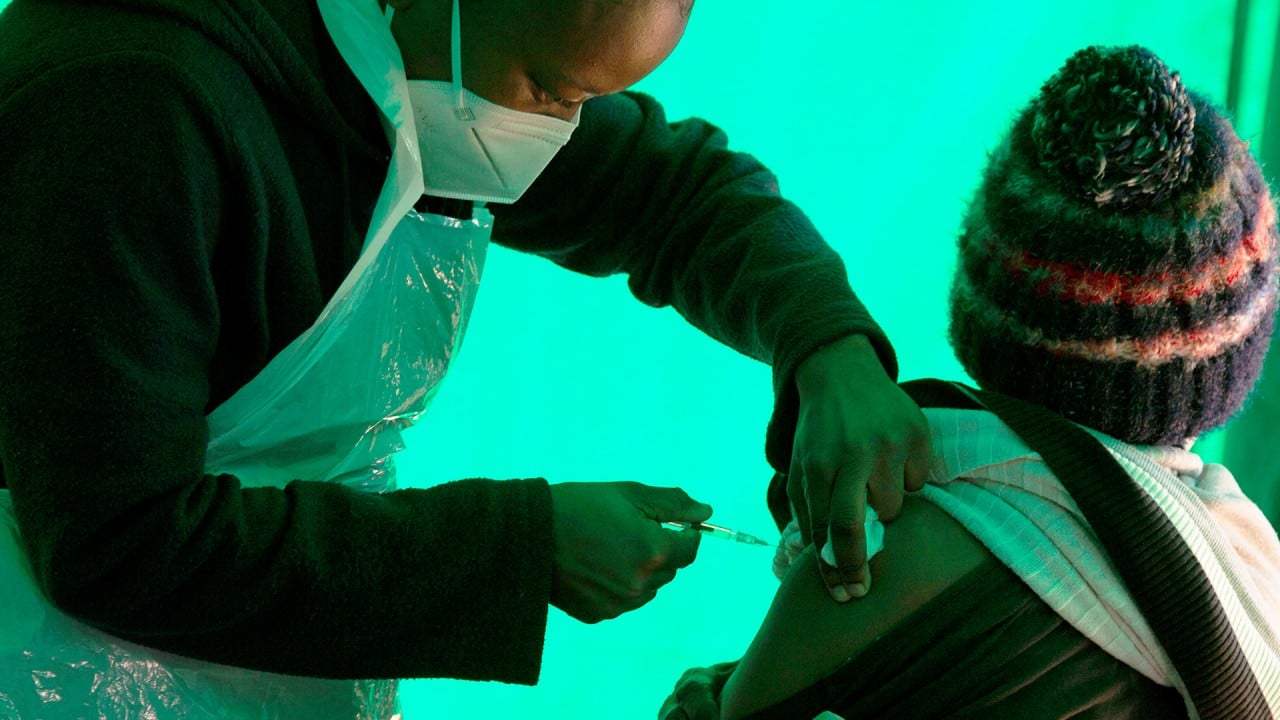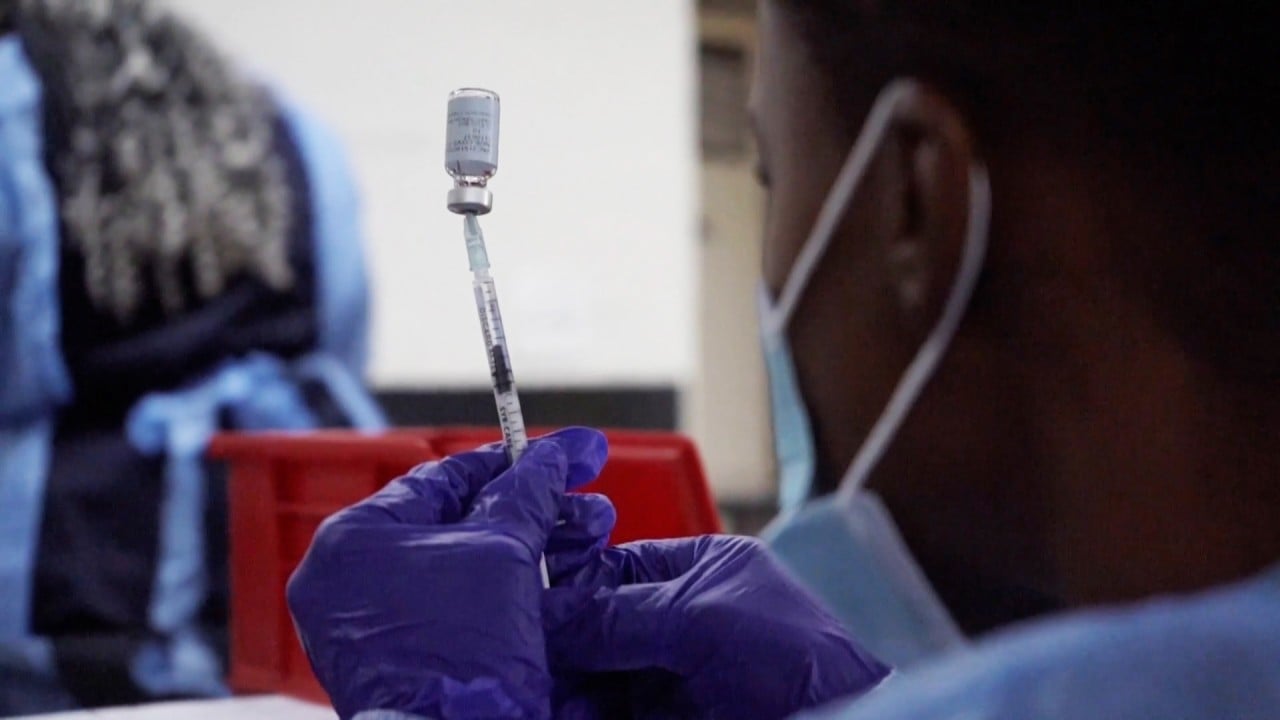
Covid-19: why hopes the Omicron variant will prove less deadly may be premature
- Early reports that appeared to support the common belief that viruses become less virulent over time may be hasty, scientists warn
- No deaths have yet been recorded from the strain, but experts warn that its ability to spread rapidly does not necessarily mean it has become less dangerous
Early reports that patients infected by the Omicron variant of Covid-19 had mild symptoms raised hopes that the virus will become less virulent in future.
That seems to fit with a commonly held belief that pathogens will cause fewer deaths or serious illnesses over time as they evolve to do less harm to the host to ensure they can continue to replicate.
But scientists have warned that even if Omicron has evolved to spread more quickly than the Delta variant – which was itself highly transmissible – it does not necessarily mean it will become less deadly in the process and should not be treated lightly until we have more information.
A large number of people infected with Sars-CoV-2, the virus that causes Covid-19, have shown no symptoms or very mild ones.
In more serious cases it can take weeks between infection and death, meaning the virus has ample time to replicate and spread.
“It is unusual that this virus undertakes most of its replication before symptoms, so I don’t believe these rules will apply. The idea that Omicron is milder is not proven and it’s too soon to know,” said Professor Nigel McMillan, co-director of the Griffith Centre for Cell and Gene Medicine at Griffith University in Australia.
“The milder but more transmissible story just isn’t right. It might turn out to be milder, but the virus is still going to have a higher case fatality rate than flu, so it is still very serious,” McMillan said.
Omicron variant likely picked up a piece of common cold virus: study
Viruses mutate all the time as they replicate themselves to invade host cells for survival. While many mutations do not have any effect on the virus, some might help the virus to better reproduce and spread.
A group of viruses with mutations that differentiate themselves from the parent or other groups of viruses is classified as a variant.
RNA viruses, including coronaviruses, are known to have fast mutation rates and it would come as no surprise if a variant emerges that is both more transmissible than Delta and highly virulent.
“Many people assume that evolution will select a virus over time which is less harmful to the host. This is not necessarily true. Whether a virus becomes more or less virulent as it evolves depends upon a complex interaction between a variety of different factors,” said Jeffrey Joy, assistant professor with the University of British Columbia who studies genomic epidemiology and evolutionary dynamics of Sars-CoV-2.
Such factors include how long people are infected with the virus, the probability of transmission and the damage the virus causes to individuals.
“The outcome of the trade-offs between these different factors determines the direction of the evolution of virulence. This can go in either direction or remain the same, being less virulent, the same or more virulent,” Joy said.
The Alpha variant, which was first identified in December last year, was described as the first “variant of concern” by the WHO. It featured four unique mutations in its spike protein, which controls entry to host cells and enables infections.
The Alpha variant was found to be 40 to 80 per cent more transmissible than the original coronavirus and numerous studies showed it had a higher risk of death or hospitalisation.
The Delta variant, now the dominant global strain with 10 unique mutations of the spike protein, shows even higher transmissibility than the Alpha variant and is more virulent.
Omicron has ‘substantial’ ability to evade immunity, researchers say
The Omicron variant has more than 20 mutations on the spike protein.
A larger number of mutations does not necessarily translate into higher transmissibility or stronger immune escape – but scientists around the world are racing to answer key questions such as how much protection current vaccines can still offer.
Understanding the biological characteristics of the Omicron variant will take time, but the results will offer a clue on how this variant might shape the trajectory of the pandemic.
A variant with improved transmissibility alone would probably be more dangerous than a variant that can partially evade the immune system, according to a study by researchers from Harvard’s T.H. Chan School of Public Health published in the journal Cell last month.
Yet a variant with both traits could cause more infections, reinfections and breakthrough infections than a variant with just one of those traits, they said.
One of the worst-case scenarios is that Omicron replaces the Delta variant as the dominant strain over time and that people prove to have lower immunity levels, throwing the global Covid-19 response off track.
On the other hand, Omicron might turn out to be a fleeting episode like Beta, another variant of concern that was first reported in October last year and caused more serious illness with stronger immune escape. But it failed to reach high frequency in most areas and is expected to fade out over time.
Omicron will not be the last variant and we might yet see more dangerous ones.
“On an evolutionary timescale, Sars-CoV-2 has only recently crossed into humans,” Joy from British Columbia University said.
“Considering the scale of the number of infected hosts, each of which is an opportunity for viral evolution, and considering that the virus also transmits to and from other alternative hosts such as white-tailed deer, which are different selective environments, there is a high probability that we will continue to see more new variants in the future.”
Christopher Brooke, a virologist and assistant professor of microbiology at the University of Illinois Urbana-Champaign, said it was possible and “even likely that we could see a variant with higher inherent transmissibility than Delta emerge”.
Why it’s too early to panic about Omicron’s ability to evade vaccines
“It is impossible to make any predictions about the virus evolving to be more or less inherently virulent over time, but as more people develop immune protection, either from prior infection or vaccination, the average risk of severe infection, hospitalisation or death resulting from infection will decrease even without the inherent virulence of the virus changing,” Brooke said.
But even if a variant that is more transmissible than the likes of Delta, or causes more deaths and serious illnesses, there are still reasons to hope the disease can be curbed.
Brooke said the dynamics behind the spread of the virus would become complicated as the balance between the inherent transmissibility and degree of immune escape shifted based on increasing levels of immunity. But vaccination would help lower the risk of the severe outcomes.
Several vaccine makers have said they are still studying the effectiveness of their products against Omicron and whether they need to update them.
More than 42.7 per cent of the world’s population has been fully vaccinated but mostly in wealthy countries.
Africa, where the Omicron variant was first reported last week, has fully vaccinated only less than 8 per cent of the population. The WHO has a target of vaccinating 70 per cent of the world’s population by the end of next year.
Joy said a high vaccination rate would “definitely help”, adding: “A focus should be placed on increasing the vaccination rates in disadvantaged countries as this will help prevent more such variants arising in the future.”
It has not been possible to eradicate the virus, even with high vaccination rates, so it is likely to continue to evolve and circulate.
“The most likely outcome is something similar to seasonal influenza virus where we will see ongoing global circulation of the virus, enabled by antigenic evolution, but that infection severity will be greatly reduced due to pre-existing immunity,” Brooke said.





